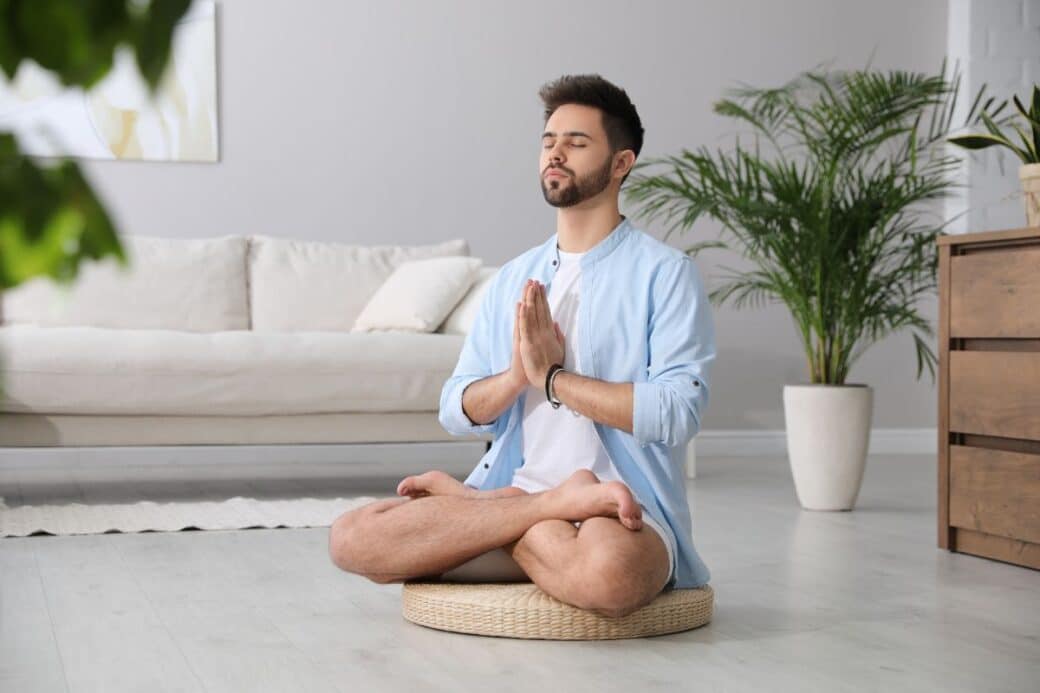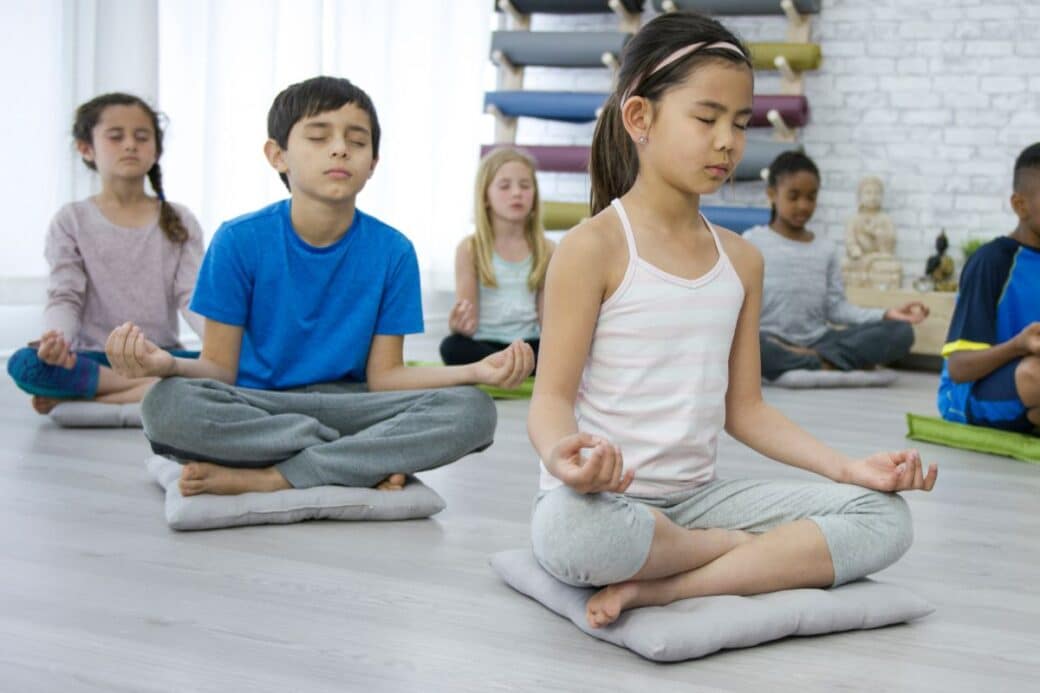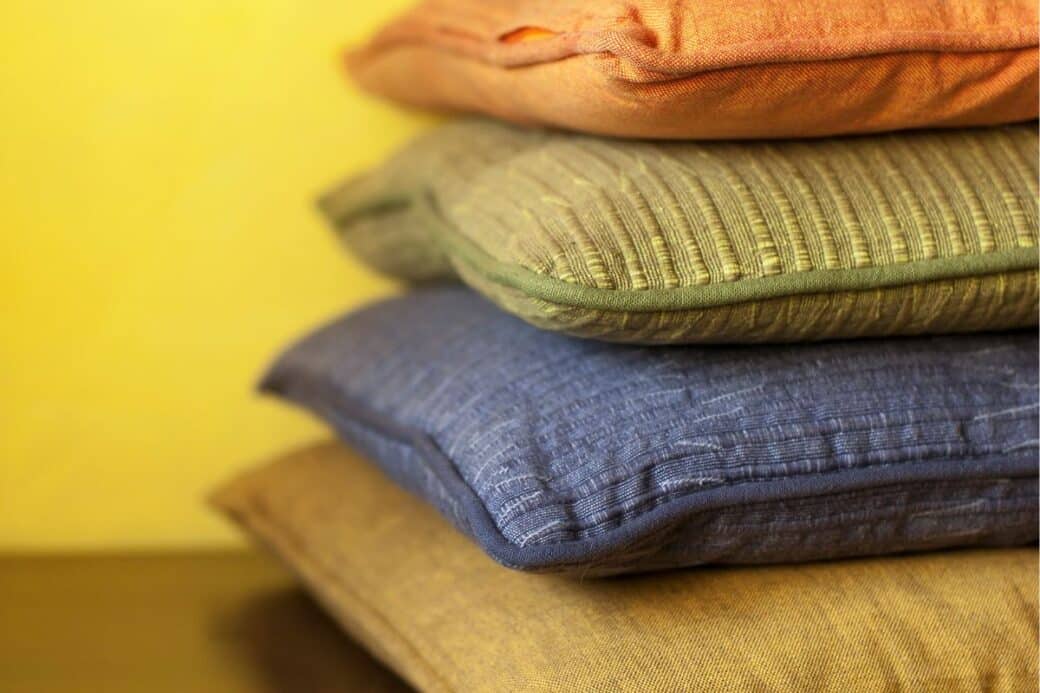Are you tired of constantly feeling discomfort while meditating? Look no further than the solution that will revolutionize your meditation practice: the meditation cushion. In this article, you will discover the importance of mastering your posture while sitting on a meditation cushion. Say goodbye to those achy knees and back pain, and say hello to a deeper and more fulfilling meditation experience. Get ready to achieve a state of tranquility and harmony with your body as you delve into the benefits and techniques of sitting on a meditation cushion. Let’s make your meditation sessions a truly blissful experience.

Sitting On Meditation Cushion: Understanding the Importance of Good Posture in Meditation
Meditation is a practice that not only calms the mind but also brings a sense of focus and tranquility. However, the effectiveness of meditation is greatly influenced by the posture you adopt while meditating. Your body and mind are intricately connected, and maintaining good posture during meditation can greatly enhance your overall experience.
The connection between body and mind in meditation
In meditation, the body and mind work together as a unified system. When your body is aligned and in a balanced posture, it allows the energy to flow freely, enabling a deeper state of meditation. On the other hand, poor posture can lead to discomfort, physical tension, and a wandering mind, making it difficult to achieve the desired level of focus and relaxation.
Impacts of poor posture on meditation experience
Poor posture during meditation can have various negative effects on your experience. Firstly, slouching or hunching can constrict your diaphragm, making it harder to breathe deeply. This shallow breathing impedes the flow of oxygen to the brain, limiting your ability to stay focused and engaged.
Moreover, bad posture can lead to physical discomfort, such as back and neck pain, which can be distracting and disrupt your concentration. When your body is in a position that is not aligned, it can create unnecessary tension and strain. This tension distracts the mind from entering a meditative state, hindering the ability to let go and find inner stillness.
The role of posture in achieving focus and tranquility
Good posture plays a vital role in achieving the desired state of focus and tranquility during meditation. By sitting in an upright position with proper alignment, you create a solid foundation for your practice. This alignment allows your energy to flow freely, promoting deep relaxation and mental clarity.
When your body is in an optimal posture, the mind follows suit. Your spine acts as the axis for the mind, providing stability and a centered focus. Good posture allows you to become more aware of your body and breath, bringing you into the present moment without distractions. The alignment of your body also supports an open and receptive state of mind, enabling a deeper connection to your inner self.
Recognizing the Different Postures for Meditation
There are various meditation postures that you can choose from, depending on your comfort and flexibility. Each posture has its own unique benefits and is suited for different individuals. Here are some of the most commonly practiced meditation postures:
The Full Lotus Posture
The Full Lotus posture, also known as Padmasana, is a classic meditation posture that requires flexibility and practice. In this posture, both feet are placed on the opposite thighs, forming a stable and symmetrical base. This posture helps to lengthen the spine, stabilize the pelvis, and promote a grounded sense of stability.
The Half Lotus Posture
The Half Lotus posture, or Ardha Padmasana, is a modified version of the Full Lotus posture. In this posture, one foot is placed on the opposite thigh, while the other foot rests on the floor. This posture offers a balance between stability and comfort, making it suitable for those who may not have the flexibility for the Full Lotus posture.
The Burmese Posture
The Burmese posture, also called the Seated position, is a simple and comfortable meditation posture. In this posture, both legs are crossed with both feet resting on the floor. The knees are slightly wider than the hips, allowing for a stable and relaxed position. The Burmese posture is often preferred by beginners and individuals with limited flexibility.
The Seiza Posture
The Seiza posture, which translates to “proper sitting,” is a traditional Japanese meditation posture. In this posture, you sit on your knees with a cushion or bench supporting your buttocks. The feet are placed under the body, providing a stable and comfortable position. The Seiza posture promotes an upright spine and encourages a sense of groundedness.
The Chair Posture
The Chair posture is a suitable option for those who require extra support or have physical limitations. In this posture, you sit on the edge of a chair with your back straight, feet flat on the floor, and hands resting on your thighs. The Chair posture allows for a comfortable and relaxed meditation experience, especially for longer meditation sessions.

Exploring the Types of Meditation Cushions
To further enhance your meditation experience, using a meditation cushion can provide additional support and comfort. Here are some commonly used meditation cushions:
Zabuton Cushion
A zabuton cushion is a large rectangular cushion typically placed underneath the meditation cushion or directly on the floor. It provides a padded surface to cushion the knees and ankles, reducing pressure points and enhancing comfort during meditation. The zabuton cushion also insulates against drafts and cold floors, allowing for a more relaxed and focused meditation session.
Zafu Cushion
A zafu cushion is a round cushion that elevates the hips and promotes a more stable and aligned posture. It is often used in conjunction with a zabuton cushion. The zafu cushion helps to tilt the pelvis forward, aligning the spine and reducing strain on the lower back. It provides a comfortable and supportive base for seated meditation.
V Shaped Cushion
A V-shaped cushion, also known as a V-meditation cushion or support cushion, is designed to provide additional support and stability for individuals who require extra lumbar or pelvic support. The V-shape creates a cradle-like support for the lower back, encouraging optimal posture during meditation. This cushion is particularly beneficial for those with lower back issues or discomfort.
Crescent Shaped Cushion
A crescent-shaped cushion, also known as a crescent meditation cushion, has a curved design that provides a natural contour to support the hips and pelvis. It encourages proper alignment of the spine, reducing strain and promoting a more comfortable meditation posture. The crescent shape allows for a wider range of positioning options, accommodating different body types and flexibility levels.
Inflatable Meditation Cushion
An inflatable meditation cushion offers the convenience of portability and adjustable firmness. It can be easily inflated or deflated to achieve the desired level of support and comfort. This type of cushion is ideal for individuals who travel frequently or prefer a customizable cushion that can be adjusted to their specific needs.
Choosing the Right Meditation Cushion
When selecting a meditation cushion, several factors should be considered to ensure it suits your body type, flexibility, and meditation posture. Here are some key considerations to keep in mind:
Assessing your body type and flexibility
Each individual has unique body proportions and flexibility levels. Consider your height, weight, and flexibility when choosing a meditation cushion. Opt for a cushion that provides adequate support for your body and helps you maintain proper alignment during meditation.
Considering your meditation posture
Different meditation postures require different support. If you practice the Full Lotus or Half Lotus posture, a cushion with more elevation, such as a zafu cushion, may be suitable. For postures like the Burmese or Seiza, a cushion with sufficient padding, such as a zabuton cushion, can enhance comfort and stability.
Material and comfort
Select a cushion made from high-quality and comfortable materials. Look for cushions with a firm yet supportive filling, such as buckwheat hulls or dense foam. The cover material should be durable and breathable, allowing for sufficient airflow during meditation.
Durability and portability of the cushion
Consider the durability and portability of the cushion, especially if you plan to use it regularly or travel with it. Look for cushions that are easy to clean and maintain. If portability is a priority, inflatable cushions or cushions with lightweight materials may be more suitable.
Setting Up Your Meditation Cushion
Once you have chosen the right meditation cushion, it is crucial to set it up properly to optimize your sitting posture. Here are some steps to ensure an optimal setup:
Ideal locations to place your cushion
Choose a quiet and comfortable space for your meditation practice. It is essential to create an environment free from distractions and interruptions. Find a spot where you can sit undisturbed and where you can maintain focus and tranquility.
Arranging supportive cushions or props
Supportive cushions or props can be used to enhance your sitting posture and bolster comfort. Place a zabuton cushion on the floor and position your zafu cushion or the cushion of your choice on top to elevate your hips. Additional supportive cushions can be added under the knees or between the lower back and the cushion for added support as needed.
Ensuring proper cushion alignment and orientation
Align your cushion in a way that supports an upright and balanced sitting posture. Ensure that the cushion is centered and positioned at a suitable height to support your hips and allow the spine to be naturally aligned. Experiment with different cushion orientations to find the most comfortable and supportive position for your body.
Mastering the Art of Sitting on Your Meditation Cushion
Once you have set up your meditation cushion, it is important to understand how to sit properly to maintain good posture throughout your meditation practice. Here are some key points to keep in mind:
Achieving the right position
Sit on your cushion with your legs crossed, maintaining a stable and comfortable posture. If using a chair, sit with your feet flat on the floor. Gently roll your pelvis forward to align your spine, creating length and space between each vertebra. Allow your shoulders to relax and your chest to open, promoting a sense of spaciousness and ease.
Maintaining a straight spine
The spine plays a crucial role in maintaining good posture during meditation. Make sure your spine is straight and aligned without slouching or overarching. Imagine a string gently pulling the crown of your head upward, elongating your spine and creating a sense of lightness and buoyancy.
Relaxing your body without slouching
While it is important to maintain an upright posture, it is equally important to relax your body. Avoid excessive tension or rigidity in your muscles. Soften your facial muscles, release any unnecessary tension in your neck and shoulders, and allow your arms and hands to rest comfortably on your lap or thighs.
Dealing with discomfort while sitting
It is common to experience discomfort or physical sensations while sitting for an extended period. Instead of resisting or reacting to the discomfort, approach it with mindfulness and acceptance. Notice the sensations without judgment and gently adjust your posture if necessary. Use your breath as an anchor, allowing it to guide you through any discomfort and maintain a sense of calm and presence.
Breathing Techniques While Sitting on Meditation Cushion
Proper breathing techniques can greatly enhance your meditation practice and support good posture. Here are some techniques to incorporate:
Understanding the role of breath in meditation
Breath is a fundamental aspect of meditation, both on and off the cushion. The breath serves as an anchor, grounding your attention and bringing you into the present moment. It also helps to regulate the body and mind, promoting a state of relaxation and focus.
Practicing diaphragmatic breathing
Diaphragmatic breathing, also known as belly breathing or deep breathing, involves expanding the diaphragm and filling the belly with each inhalation. This type of breathing supports good posture and relaxation. As you sit on your meditation cushion, focus on breathing deeply into your abdomen, allowing your breath to be slow, smooth, and natural.
Using breath to maintain posture and focus
Throughout your meditation practice, use your breath as a means of maintaining good posture and focus. With each inhalation, imagine your breath gently lifting and lengthening your spine, keeping it upright and aligned. As you exhale, soften any tension or tightness in your body, releasing it with each breath. Allow the breath to anchor your attention, bringing you back to the present moment whenever your mind begins to wander.
The Do’s and Don’ts of Sitting on Meditation Cushion
To maximize the benefits of sitting on a meditation cushion, it is important to be aware of some common mistakes and best practices. Here are some do’s and don’ts to keep in mind:
Avoiding common mistakes
- Do not slouch or round your back, as it can lead to discomfort and hinder proper alignment.
- Avoid sitting too rigidly or tensing your muscles, as it can impede relaxation and ease.
- Do not force yourself into a posture that causes pain or discomfort. Adjust your cushion or posture as needed to find a position that is both comfortable and supportive.
Proper care and maintenance of the cushion
- Regularly clean and air out your meditation cushion to maintain hygiene and freshness.
- If using an inflatable cushion, ensure it is properly inflated and free from leaks.
- Avoid exposing the cushion to direct sunlight or extreme temperatures that may cause damage to the materials.
When to adjust or change your cushion
- If you experience persistent discomfort or pain during meditation, consider adjusting your cushion or exploring different cushion options.
- As your flexibility and postural needs change over time, it may be necessary to switch to a different cushion that better supports your evolving practice.
Monitoring Your Progress On Posture
Regularly monitoring your progress and the impact of your posture on your meditation practice is a valuable tool for growth and improvement. Here are some tips for monitoring your posture:
Keeping a meditation journal
Maintain a meditation journal to record your observations and experiences. Note any changes in your posture, comfort level, or overall meditation experience. This journal can help you identify patterns, progress, and areas for improvement.
Noticing changes in your body and mind
Pay attention to how your body and mind respond to different postures and cushion choices. Notice any physical sensations, discomfort, or shifts in your mental state during and after meditation. By cultivating awareness and curiosity, you can gain deeper insights into the impact of your posture on your overall meditation experience.
Seeking professional guidance for posture
If you encounter persistent challenges or feel unsure about your posture, consider seeking guidance from a meditation teacher or posture expert. They can provide personalized advice, adjustments, and techniques to support your posture and enhance your meditation practice.
Going Beyond the Cushion: Incorporating Good Posture into Everyday Life
Good posture can extend beyond your meditation practice and positively impact your everyday life. Here are some ways to incorporate posture principles into daily activities:
Applying meditation posture principles to daily activities
Use the awareness and mindfulness cultivated during meditation to apply good posture principles to daily activities. Whether you are sitting at a desk, walking, or standing, maintain an upright and aligned posture. Notice any habits of slouching or straining, and make conscious efforts to readjust and maintain good posture throughout the day.
Exercises for improving body awareness and posture
Engage in exercises or activities that promote body awareness and strengthen the muscles necessary for good posture. Yoga, Pilates, and tai chi are excellent practices that can help improve flexibility, balance, and core strength. These exercises can complement your meditation practice and support overall posture alignment and stability.
The long-term benefits of good posture
Consistently practicing good posture can lead to numerous long-term benefits. Improved posture can help alleviate back and neck pain, reduce the risk of injury, enhance breathing and digestion, and even boost self-confidence. By incorporating good posture into your everyday life, you are investing in your overall well-being and vitality.
In conclusion, understanding the importance of good posture in meditation is crucial for maximizing the benefits of your practice. By recognizing the different postures and selecting the right meditation cushion, you can create a supportive and comfortable environment for your meditation sessions. Remember to set up your cushion properly, sit with proper alignment, and incorporate breathing techniques to enhance your posture and focus. Monitor your progress, seek professional guidance if needed, and extend good posture principles to everyday life. By mastering your posture on the meditation cushion, you unlock the potential for a deeper and more fulfilling meditation experience.




